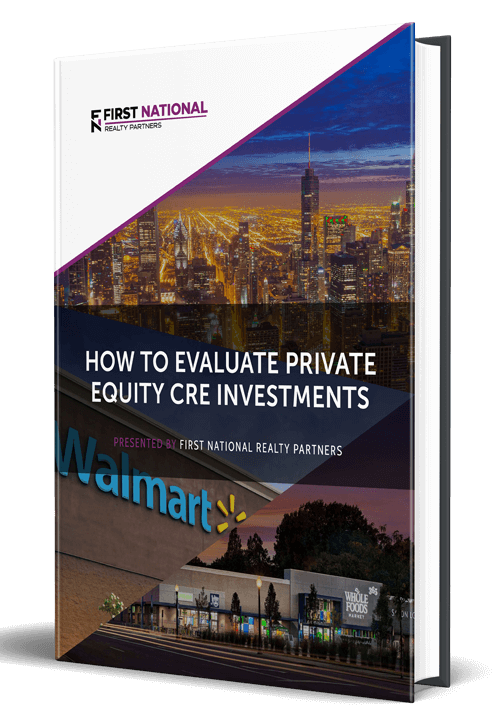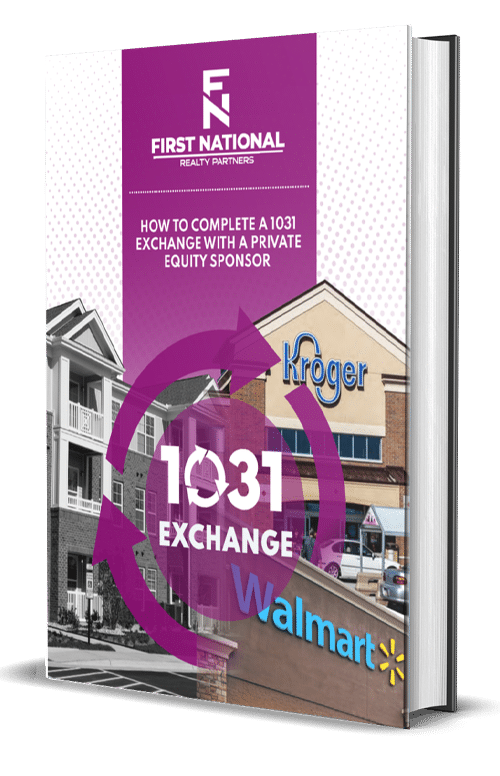One thing that nearly all commercial real estate (CRE) properties have in common is tenants with lease agreements. The details of the lease, such as the type of lease, rental rate and lease term, can vary significantly from one property to another and can have a material impact on the price and risk associated with a potential purchase. For this reason, it is absolutely imperative that a significant amount of due diligence be performed on each lease to understand the details and how they impact the property’s operations.
Lease Type: Gross vs. Net
Broadly, commercial leases can be grouped into two buckets, Gross and Net. Again, the details can vary by lease according to the needs of the tenant.
In a Gross lease structure, the tenant pays one base rental amount and nothing more. The property owner is responsible for paying all of the operating costs associated with managing the property on a day to day basis. For this reason, the base rental amount is higher because the property owner knows that they will have to use some portion of the rent for operating expenses. This is an important distinction when modeling income and expenses.
In a Net lease real estate structure, the tenant pays a base rental amount plus some portion of the property’s operating expenses that is typically proportionate to the percentage of space that they lease in the property. For this reason, the base rental amount tends to be lower because the property owner knows that the tenant is paying for their portion of operating expenses.
There are multiple types of net leases that are most commonly found in office, industrial, and retail properties. In a single net Lease, the tenant pays their base rent plus property taxes. In a “double” net lease, the tenant pays for their base rent plus property taxes and insurance. While these types of Net leases are frequently used, there is another type that is particularly popular with both investors and tenants known as a Triple Net Lease.
What is a Triple Net Lease?
Like the single and double net leases, the Triple Net lease, sometimes written as “NNN lease”, is a structure where the tenant pays a base rental amount plus operating expenses, which typically include common area maintenance, building insurance, and property taxes.
However, the key difference is that in the Triple Net Lease, the tenant is responsible for all of the property’s operating expenses, which includes maintenance, real estate taxes, and insurance. Depending on the specifics of the lease, the tenant may occasionally be responsible for roof and structural maintenance.
The term for a Triple Net lease also varies depending on the needs of the tenant and the strategy of the property owner. Smaller tenants may prefer the flexibility that comes with short term leases of 1-2 years; however these aren’t the ones that investors are typically interested in. Larger tenants and investors tend to prefer leases with longer terms of 10+ years because of the predictable nature of the cash flows.
Why Tenants Like Triple Net Leases
There are two major reasons that tenants prefer Triple Net Leases, money and control.
From a money standpoint, tenants like Triple Net Leases because they come with a lower base rental amount. Granted, they are also responsible for operating expenses and maintenance costs, but the lower base rent provides some degree of cost savings over a Gross lease arrangement.
With regard to control, Triple Net leases are particularly popular with large national companies who are particularly conscious of their brand identity. As such, a Triple Net Lease gives them complete operational control of the property and allows them to run it to their corporate and brand specifications.
Why Investors Like Triple Net Leases
When it comes to investors, there is a lot to like about Triple Net Leases:
- Lower Operating Expenses: Because the tenant is responsible for the bulk of the property’s operating and maintenance expenses, the amount the owner has to pay is lower.
- Risk: Again, because the tenant is responsible for paying the bulk of the property’s operating expenses, the property owner is able to shift the risk of rising costs from themselves to the tenant.
- Management: In a Triple Net Lease, the tenant is responsible for basic repairs and maintenance to the property, which reduces both the time commitment needed to manage the property and amount of property management fees that the owner has to pay. For this reason, Triple Net Leased properties are particularly popular with investors seeking a passive stream of income.
- Financing: Triple Net Leased properties, especially those with national tenants, are usually able to secure long-term financing with favorable terms. These lower interest rates result in lower interest expense, which can boost the long term cash flow of the asset.
- Tenants: Again, Triple Net Lease properties tend to be popular with large, national companies with investment grade credit ratings. As a result, there is a lower risk of tenant default, which makes the rental payments akin to a long term bond.
- Rent Increases: Often, Triple Net leases contain contractually mandated rent increases at regular intervals over the lease term. For example, it could say that the rent goes up 2.5% every year or 10% every five years. These increases result in improved Net Operating Income over time.
For all of the reasons listed above, Triple Net leased properties are very popular with a particular subset of investors, individuals who are somewhat risk averse and prioritize income and stability over growth. Triple Net leased properties are also a popular option for individuals who are seeking replacement properties in a 1031 Exchange.
What to Look for in a Triple Net Leased Property
While the benefits of a Triple Net Leased property can be impressive, they aren’t without risk. As such, there are a number of considerations for potential investors interested in them. We want to highlight four of the most important below:
- Tenant Credit: The primary risk in a Triple Net Lease is that the tenant will default on their payments. This risk is particularly acute when there is only a single tenant that occupies the property. If they default on their lease payments, the property’s income can disappear overnight.
To mitigate this risk, it is important to evaluate the strength of the tenant’s finances carefully. We like to look at the major credit rating agencies like S&P, Moodys, and Fitch to understand the tenant’s credit rating and whether or not there is a distinct risk of default.
- Capital Structure: The amount of debt on the property is directly correlated with risk. The more it has, the higher the risk. We prefer relatively low leverage in the range of 50%-65% of the property’s value. If it gets into the 85%-90% range, the risk profile of the investment is increased significantly, regardless of who the tenant is.
- Relevance: Company needs are constantly changing and many real estate managers are constantly re-assessing strategic priorities. In some cases, this means that a company may no longer have a need for a specific space. To decrease the risk that this will happen, we like to look at the relevance of the relationship between the property and the company’s business operations. If it is a strategically important or high performing location, it is much less likely to be abandoned by the business.
- Term: Finally, we like to look at the remaining term on the lease. The longer, the better. Fundamentally, the purchase of a Triple-Net leased property is an investment in a series of cash flows. The longer, and more certain, it is, the more we are willing to pay for it. If we are looking at purchasing a property and there is only 2 years remaining on the lease, there is a risk that the tenant could decide not to renew or that the prevailing rates at the time of renewal are lower than the existing lease. For this reason, we prefer properties with long-term leases already in place.
If the property passes muster on all of these fronts, we are much more likely to pursue an investment…at the right price. In 2022, a series of economic events have converged to make Triple Net Leased properties very popular and more challenging to acquire at a favorable price.
Why Triple Net Leased Properties are Particularly Popular in 2022
In March of 2020, the World Health Organization declared the novel coronavirus and the disease it causes, COVID-19, to be a global pandemic. This designation roiled global markets and caused an immediate and violent sell off in securities markets and the shuttering of thousands of businesses nationwide. In response, the Federal Reserve announced drastic cuts in interest rates to spur economic activity. Further, they have suggested that rates will remain low well into 2022. How does this relate to Triple Net Leased properties? It is all about the “risk free rate.”
The risk free rate is the interest rate on a United States 10-Year Treasury bond. It is so named because this is considered to be the interest rate that can be earned on an investment with almost no risk. So, individuals like to compare the amount of risk in an investment and the potential return to the risk free rate to see if they are being properly compensated for said risk.
In the early days of the pandemic, the interest rate in the 10-year Treasury was in the 1.5% – 1.6% range. However, in response to interest rate cuts and increased demand, the rate quickly plunged to the ~.7% – .75% range. Now, assume that a Triple Net Leased property offers an annual return of 5%. When the risk free rate is 1.6%, the “spread” between the two may not have been large enough to compensate for the risk. But, when Treasury rates plunged, the spread widened and investors seeking yield began to view that 5% return much more favorably. As a result, there has been a material uptick in demand for Triple Net Leased properties and an associated rise in prices.
Interested In Learning More?
First National Realty Partners is one of the country’s leading private equity commercial real estate investment firms. We leverage our decades of expertise and our available liquidity to find world-class, multi-tenanted assets below intrinsic value. In doing so, we seek to create superior long-term, risk-adjusted returns for our investors while creating strong economic assets for the communities we invest in.
If you are an Accredited Investor and would like to learn more about our triple-net leased investment opportunities, contact us at (800) 605-4966 or info@fnrpusa.com for more information.






